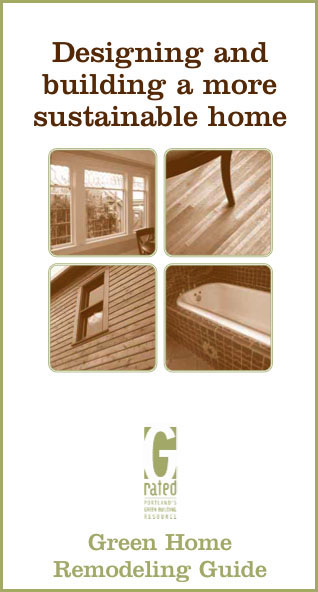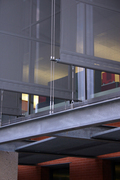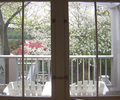The American Recovery and Reinvestment Act of 2009 (ARRA) signed by President Barack Obama on February 17, 2009, extends, expands, and simplifies the federal income tax credits for homeowners who make energy efficiency home improvements and removes the caps on the investment tax credits for geothermal heat pumps.
Read MoreThere are several ways architects, gardeners, and building professionals can use or modify landscaping to save energy and water… including:
1. Employing Landscape Shading
It’s important that the home be oriented so that it can absorb heat from the sun during cold weather and reduce solar heat gain during warm weather, but Tavella adds that strategic landscaping can improve that effect. “On the eastern side, southeastern side, and south side, we plant deciduous trees 20 to 30 feet away from the building. That helps reduce solar gain during the summer months.”
In addition, deciduous trees are effective in mixed climates because they lose their leaves in winter time, allowing solar gain during the cold months, Tavella notes.
Read MoreTechnically speaking, the WaterMill is an atmospheric water collection device that condenses water vapor and purifies it. In English: It’s a home appliance that makes drinking water for your whole family - using only air….
Here’s how it works:
The system draws in moist, outside air through an air filter. The moist air passes over a cooling element, condensing the moist air into water droplets. This water is then collected, passed through a specialized carbon filter and is then exposed to an ultraviolet sterilizer, eliminating bacteria…
The result? You have taken control of your family’s drinking water needs…
Once drinking water is created, it goes to the point of use devices in your home: your refrigerator, spigot, water cooler or backsplash dispenser.
Read MoreThe archetype exists outside of time and place. Myths and legends are both particular and universal; while they transform in context and detail to reflect the temperament of a particular culture, their archetypal meanings remain unchanged.The wisdom expressed by the ancients in their philosophies and myths open the door to a vast array of patterns, themes and symbols; investigation into the meanings behind these archetypes has lead the individual to fresh perspectives on life and cultures to new worldviews.
By tapping into this wellspring of ancient wisdom we carve a path for novel ideas, drawing images and essential truths from the depth of their words. Myths and metaphors provide the structure for making the modern home meaningful. As a design tool they probe the depths of the earth and the highest potential of the heavens, they present the mechanism for enriching an empty husk of a house with vitality and personality.
Read MoreWe are responsible to each other, the earth, and future generations….
There are enough resources for us all, if we share….
Free exchanges of information allow for greater, collective creative potential….
Love, care and compassion have the power to transform the fabric of society….
We hope that by showing the diverse ways oneness is expressed—in the fields of sustainability, conflict resolution, spirituality, art, economics, indigenous culture, and social justice—others will be inspired to create solutions to personal and community challenges from their own lived understanding of oneness…..
“The Global Oneness Project is a special project of Kalliopeia Foundation, a private grant-making foundation in northern California committed to honoring the unity at the heart of life’s rich diversity.”
Read More“Modern civilization is no longer sustainable: it either breaks down, or it transforms. The challenge is to transform it into a civilization where six-and-a-half billion or more people can live in dignity, and harmony with each other and nature. This civilization must be diverse yet unified. It must be an organic whole, the same as nature and the universe…
It is in our own best interest to make sure that this much-prophesied watershed in human affairs is not a prelude to breakdown, but the springboard to an age of peace and sustainability.”
excerpt from article, GLOBALSHIFT!: Why, How, and When, by Ervin Laszlo
Read More










